The new effects pedals you need to be stomping in 2022
Gear Expo 2022: check out our pick of the finest stompboxes and multi-effects for the year ahead
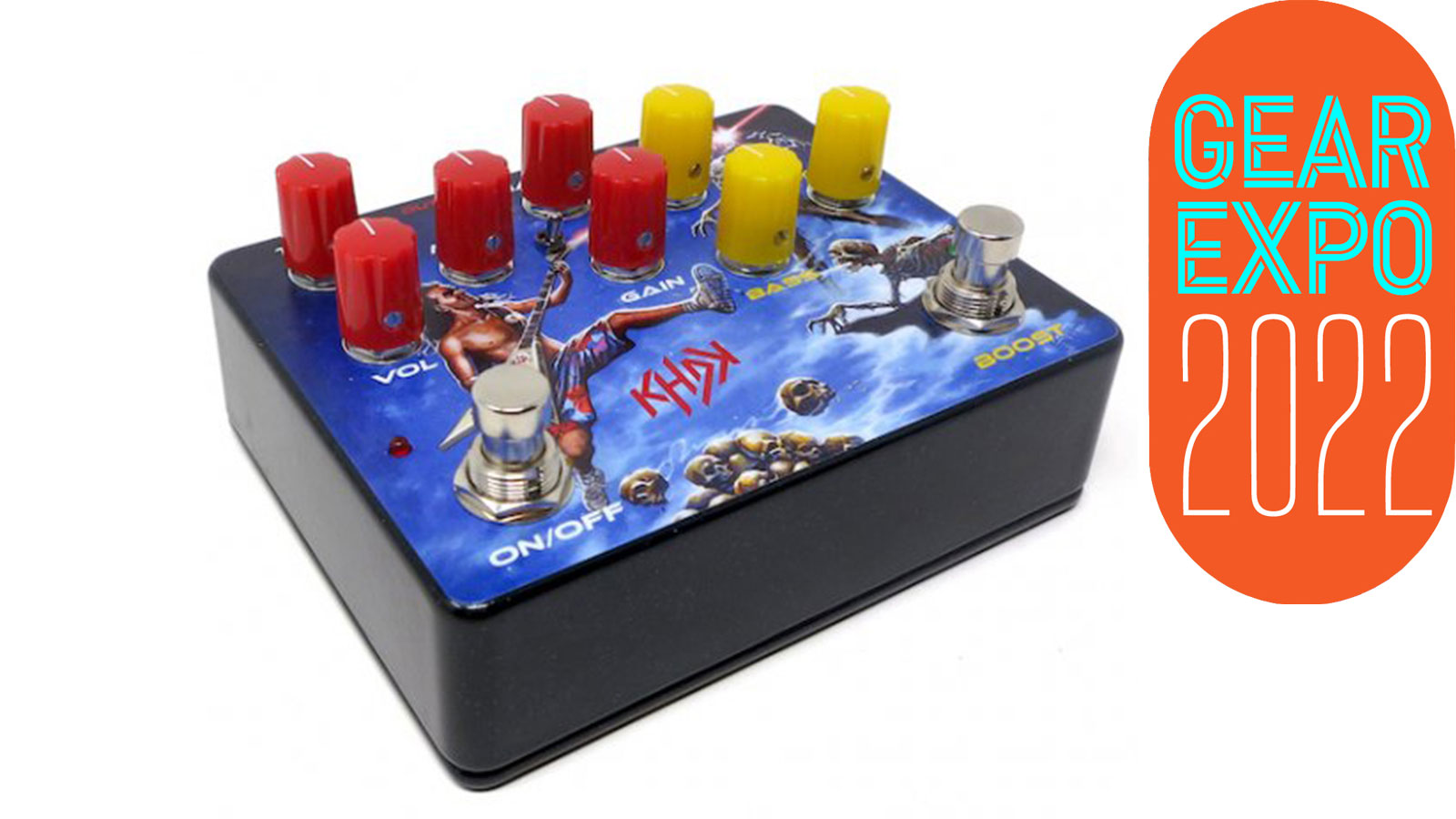
2022's must-have pedals
GEAR EXPO 2022: Winter NAMM might once again be a bust thanks to Covid, but our Gear Expo 2022 has nonetheless been full of enticing new gear announcements. So, while the year is young, we've already had enough new effects pedals dangled before our eyes to fill our 'boards several times over.
Here we've rounded-up a selection (complete with demos, where possible) of the best and brightest stompboxes due on the shelves in 2022 – from the revival of Gibson's storied Maestro range, through to new signature gear from Tom Morello and Scott Ian and new pedals from MXR, TC Electronic, Mr Black and Walrus Audio.
TC Electronic
TC Electronic Infinite Sample Sustainer
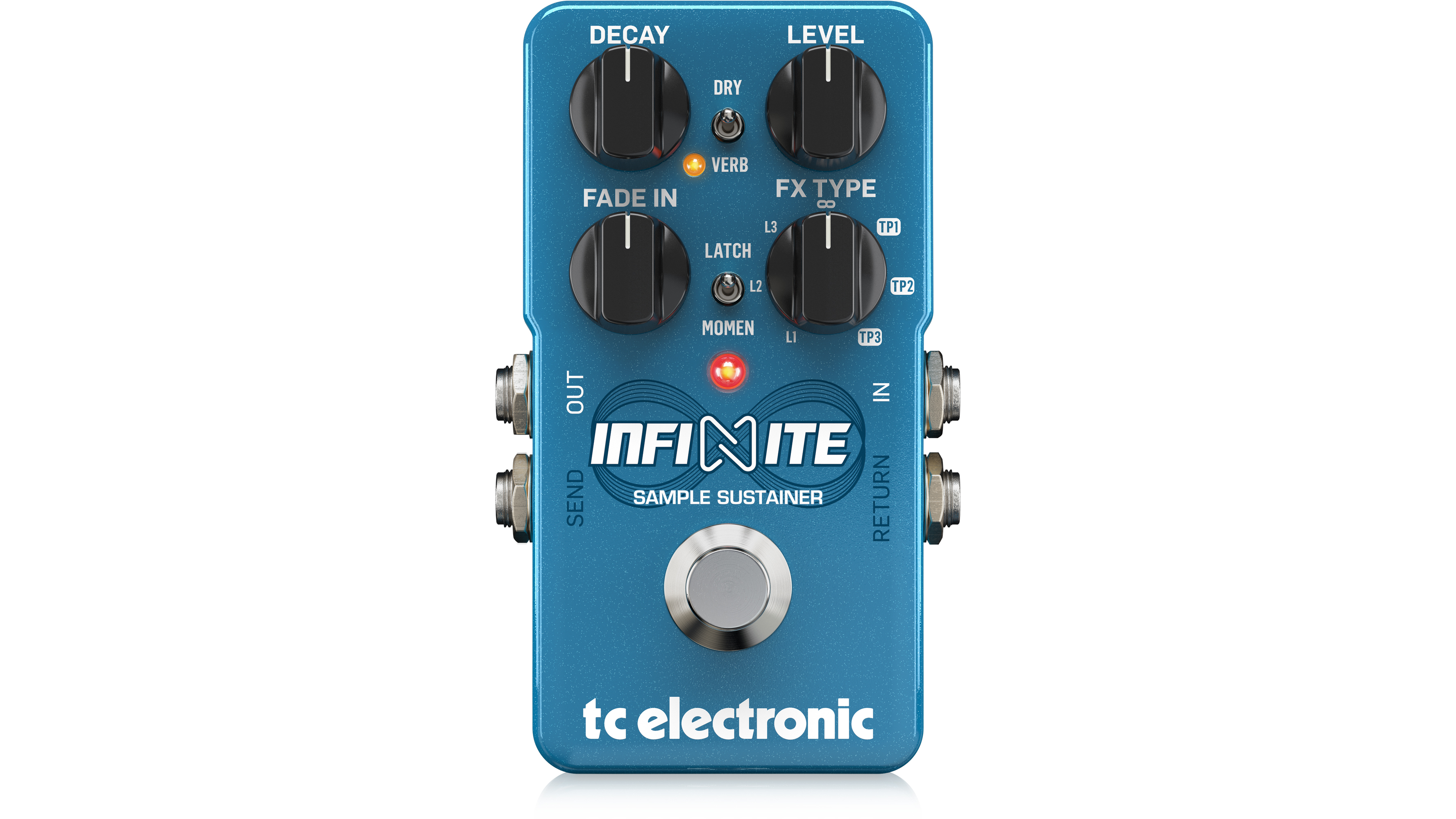
Fans of the Electro-Harmonix Freeze and Gamechanger Audio Plus pedals, or simply anyone who likes the idea of taking sustain to new realms, are going to want to check this out; TC Electronic's Infinite Sample Sustainer pedal delivers on its name from the sounds showcased in these demos.
This pedal goes much further than an impressive one-trick pony. There's seven effect types here, including the Hall Of Fame's acclaimed reverb algorithm and a modulation block, shaped by fade in, decay and level controls. There's also Latching and Momentary modes too.
Read more about the TC Electronic Infinite Sample Sustainer
TC Electronic SCF Gold
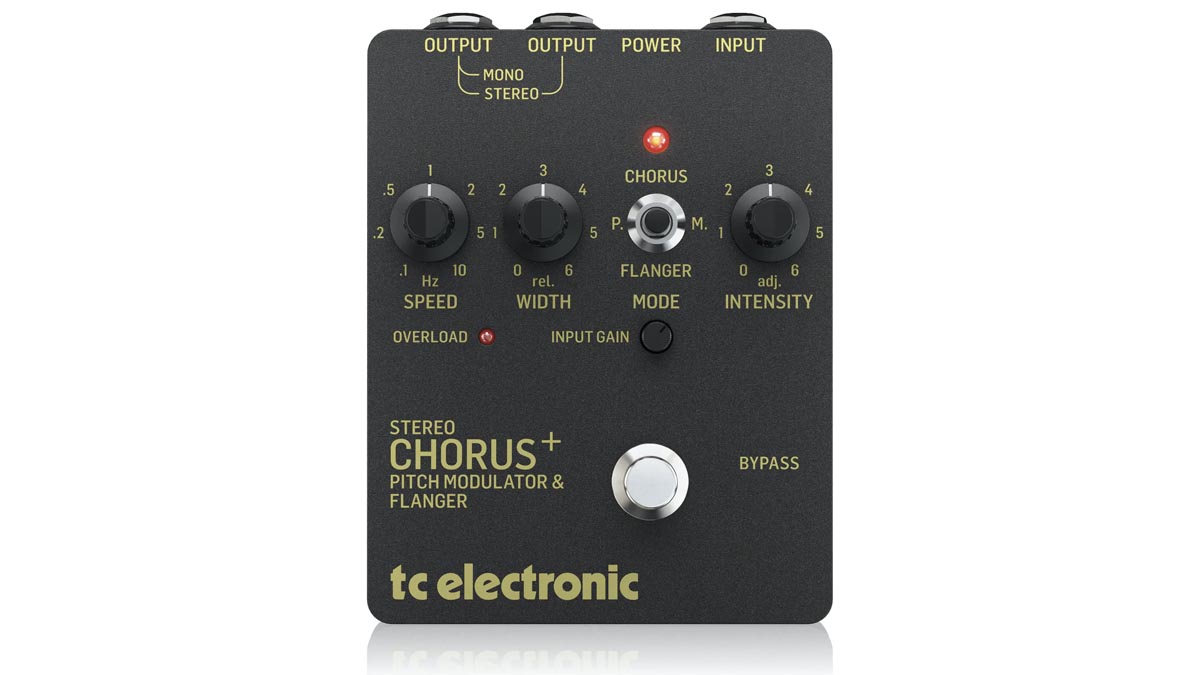
TC Electronic has turned the clock back 45 years to reissue its first-ever pedal with a faithful but subtly improved Stereo Chorus Flanger.
Returning as the SCF Gold, it presents its trio of modulation flavours in similar fashion, but has added extra headroom and a 9V DC input so that it runs on a regular pedalboard power supply.
Get the MusicRadar Newsletter
Want all the hottest music and gear news, reviews, deals, features and more, direct to your inbox? Sign up here.
Read more about the TC Electronic SCF Gold
Head to TC Electronic for more details on both of the above.
Fender
Fender Hammertone series
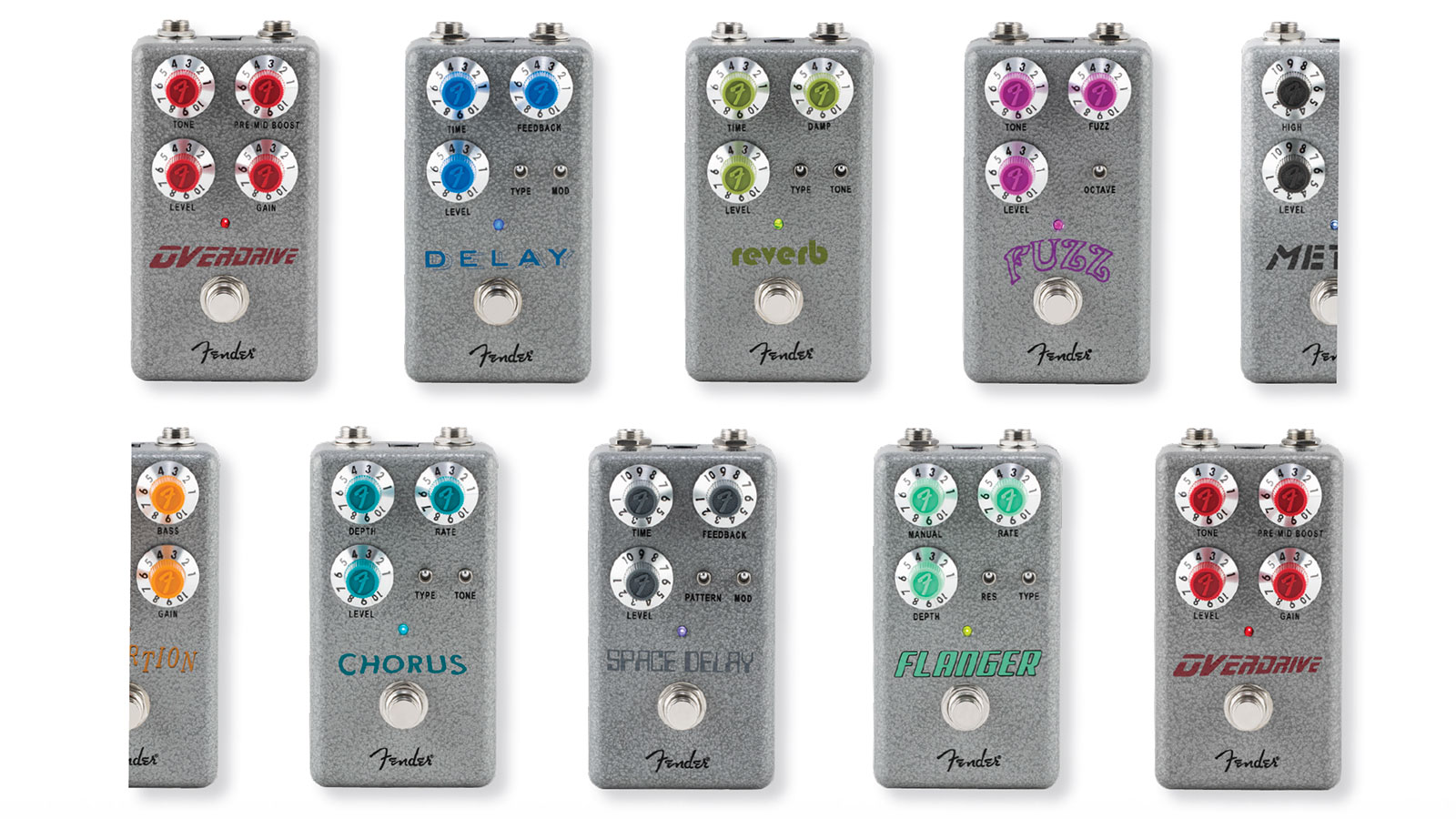
Fender's ever-evolving pedal development continues to impress; and now there's a whole new series of slimmer stompboxes with accessible prices. Say hello to Hammertone.
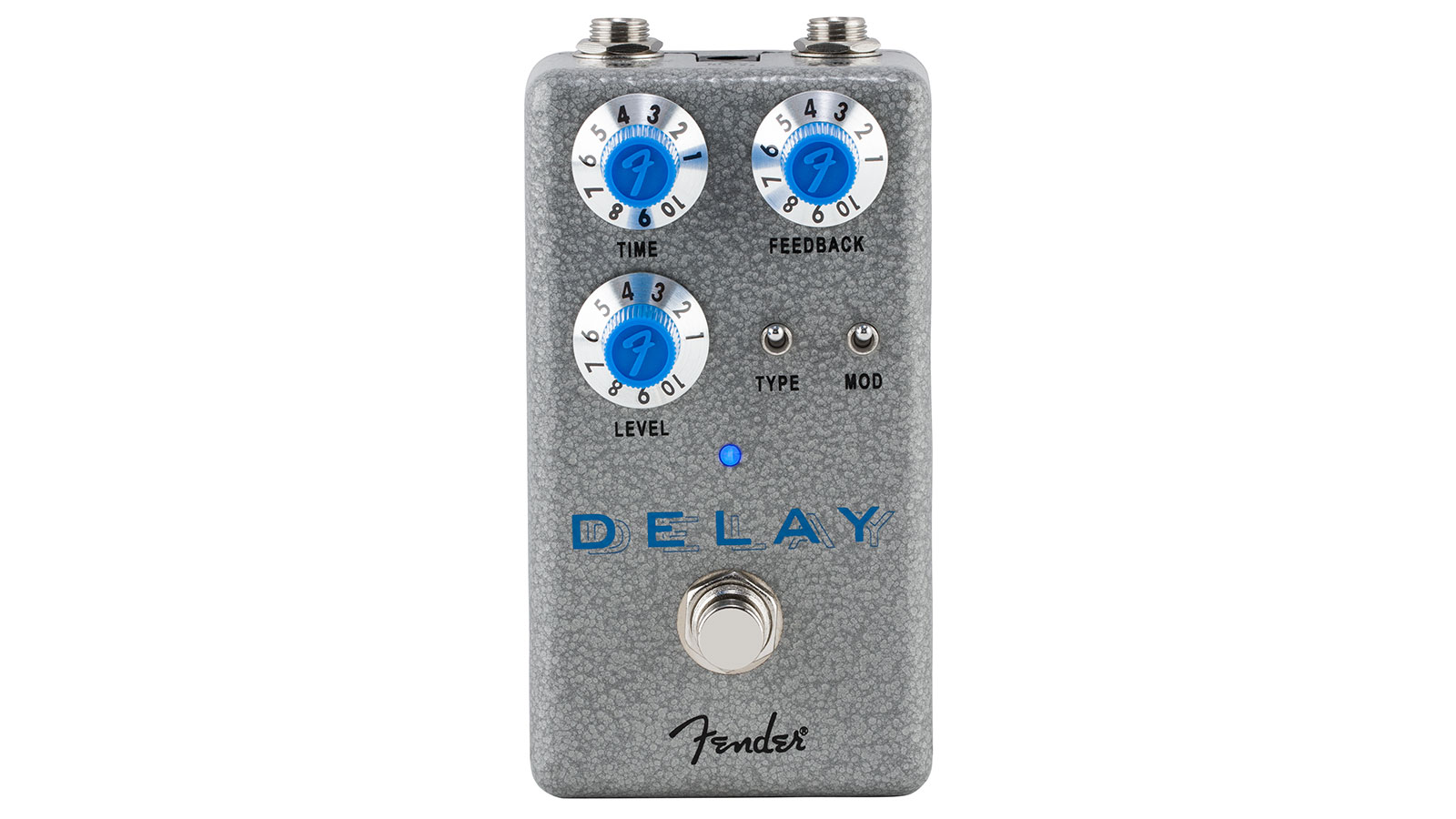
The Hammertone series of nine pedals have been designed by Fender's effects guru Stan Cotey and covers a lot of requirements with distortions, two delays, overdrive, reverb, chorus and fuzz; offering digital and analogue circuitry.
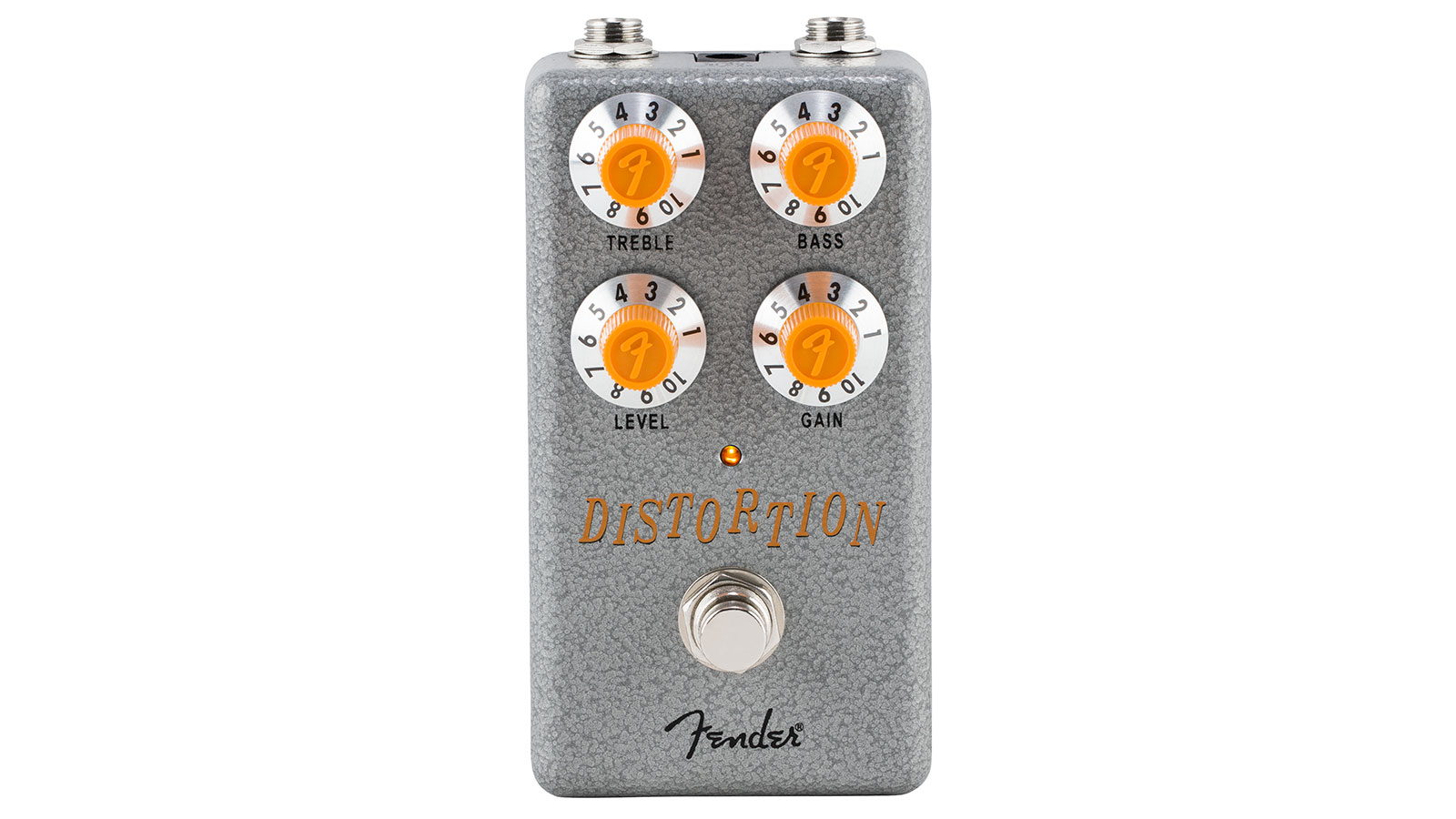
The grey powder-coated metal cases and coloured dials certainly tick the contemporary cool box for us, and the true-bypass pedals are offered at street prices below $100/£85/€100.
Read more about Fender Hammertone pedals
MXR
MXR Tom Morello Power 50 Overdrive
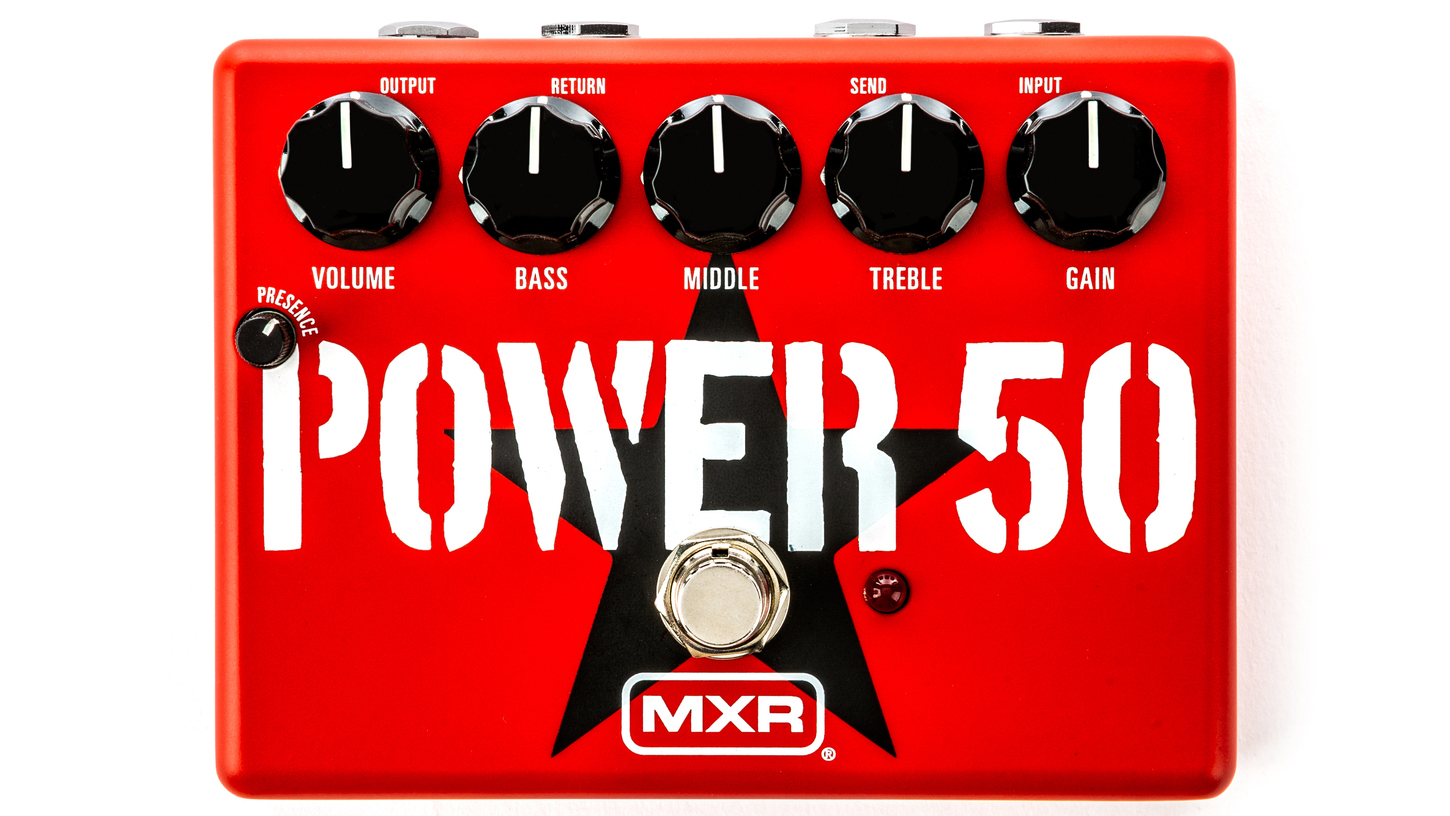
The Power 50 is the first signature Tom Morello drive pedal, and the demo below might convince you that it is the only one you really need to grapple with his tone.
Designed to replicate the sound of his Marshall JCM800 2205 through a Peavey 4x12 in a pedal, the Power 50 could be considered it basecamp for mastering Morello’s off-road adventures in sound.
You can pick up the MXR Power 50 for $/£189. And head over to Dunlop for more details.
Read more about the MXR Tom Morello Power 50
MXR Poly Blue Octave
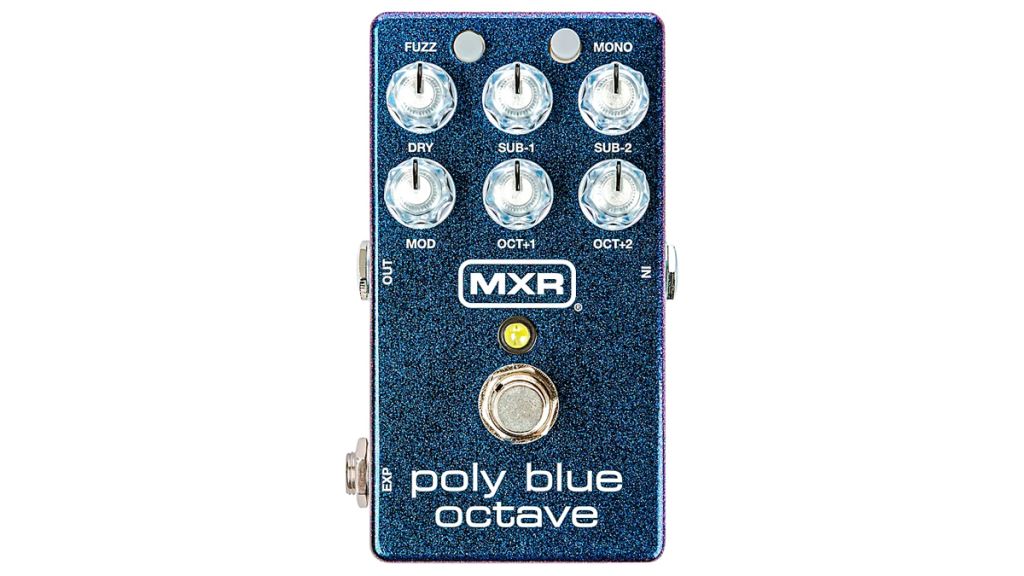
MXR has announced the release of the M306 Poly Blue, an expanded version of the iconic Blue Box octave/fuzz pedal used by Jimmy Page on Led Zeppelin’s Fool In The Rain, with a new comprehensive set of controls.
For a start, the clue is in the name, as the Poly Blue is polyphonic (although it can also be switched to work in monophonic mode). The pitch effects within the pedal have been separated out, with dedicated level controls for sub-octave one and two, as well as two additional controls for blending in one and two octaves above the note you’re playing - that’s a four-octave range in total!
The resulting blend can all be fed into a modulation circuit and there's a switchable fuzz circuit, too.
We’re expecting the MXR Poly Blue to be priced at £199/$199, with retailers already accepting pre-orders.
Read more about the MXR Poly Blue Octave
Maestro pedals
Fuzz Tone FZ-M
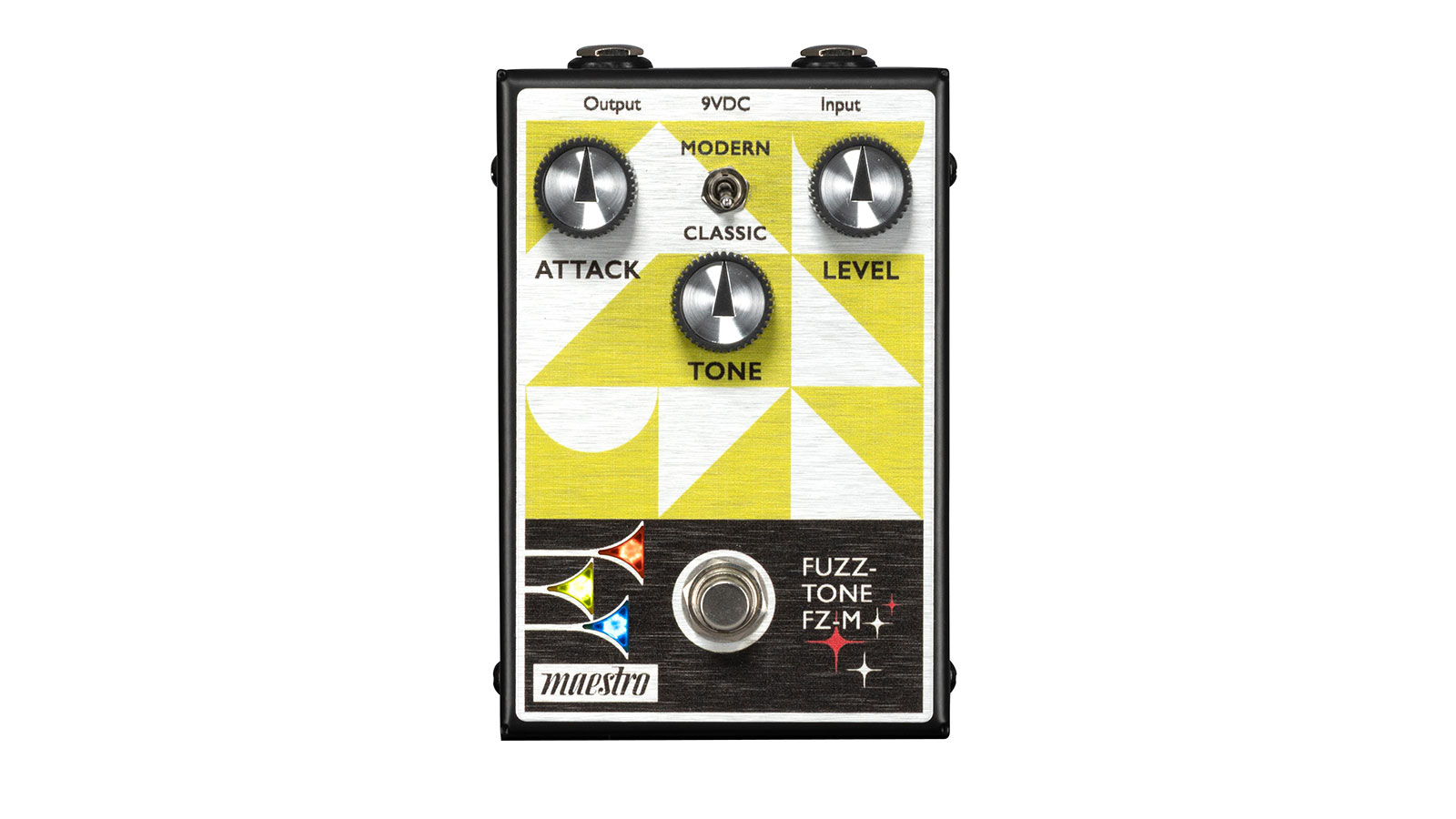
The big name of the launch, due its aforementioned ‘Keef’ associations. The Fuzz-Tone FZ-1 of the early-60s lays the strongest claim of any to the mantle of the ‘original fuzz pedal’.
This new iteration intends to deliver those reed-y ‘Stones tones but makes clever use of the voicing switch to give players the option of a ‘thicker, more modern’ sound.
Invader Distortion
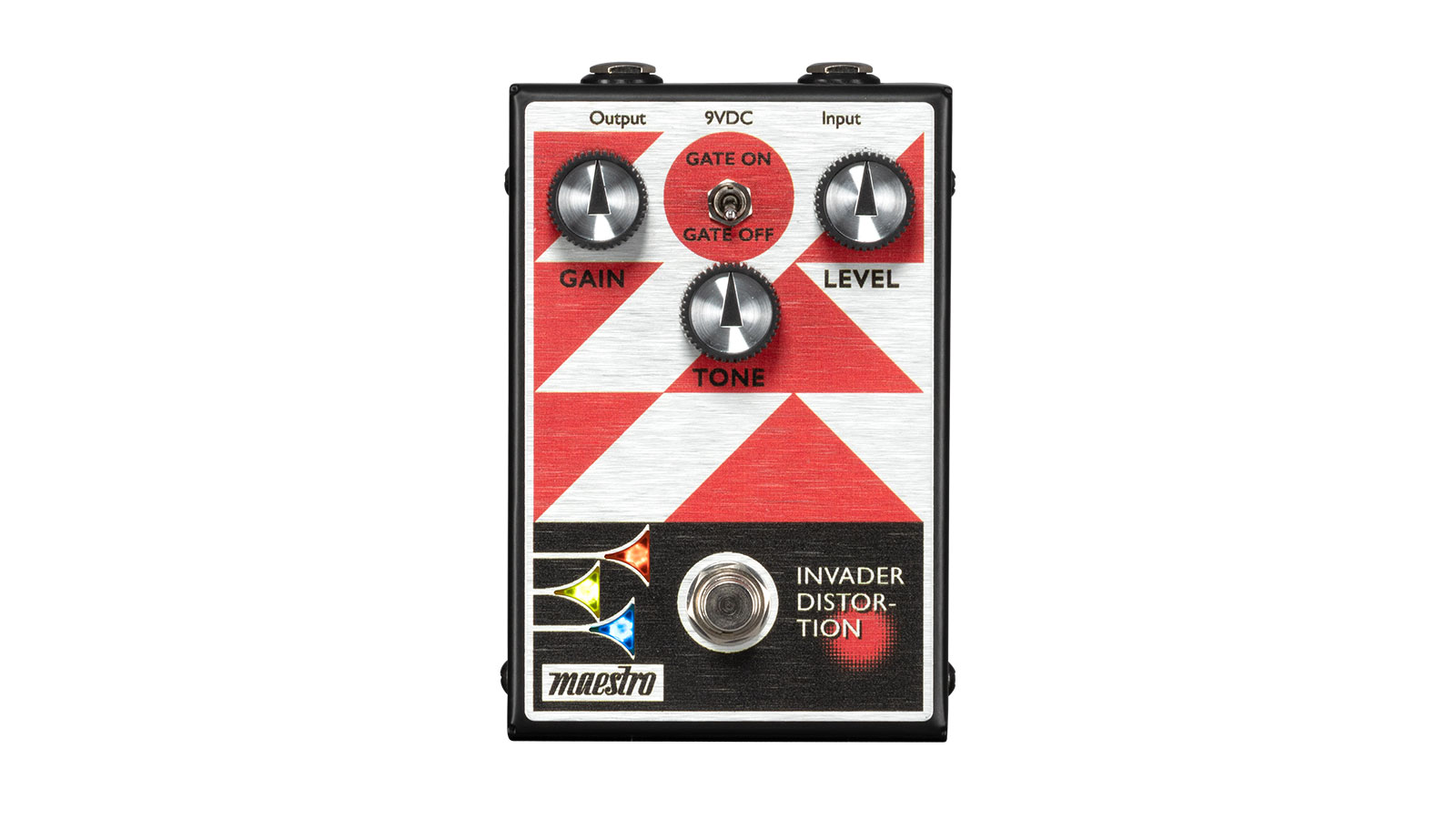
Another all-analogue design, the Invader is a more aggressive beast, designed to offer high-gain, harmonic-laden distortion tones.
Like the Ranger [below], the controls are straightforward, but there’s more than meets the eye at first. The toggle switch allows you to add a noise gate to the circuit and you can adjust the threshold via an internal trim pot.
Ranger Overdrive
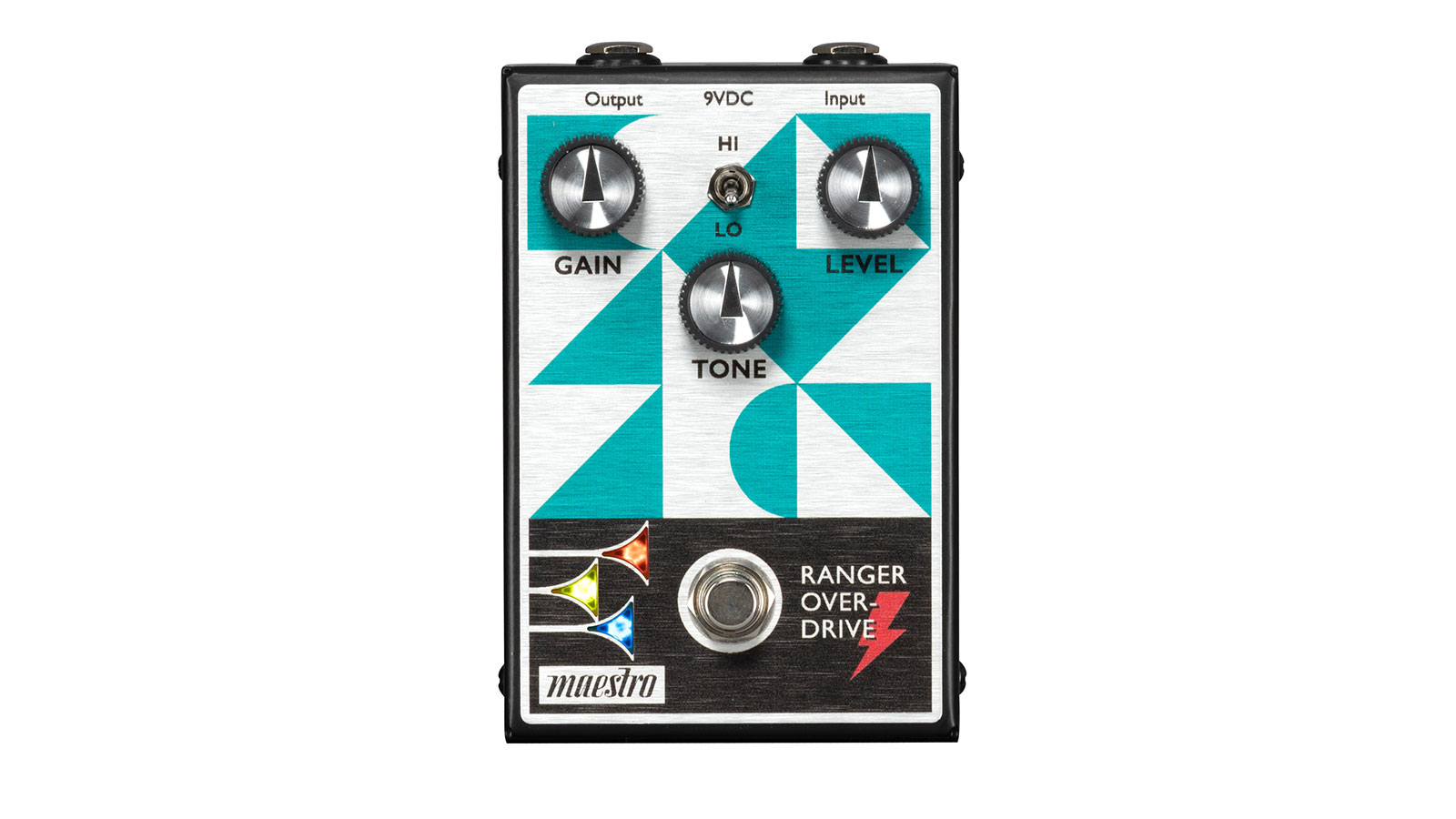
The Ranger is an all-analogue overdrive pedal with a simple set of Gain, Tone and Level controls. It takes its tonal inspiration from tube amps and is all about responsive tones.
The choice of voices keeps things interesting. ‘Hi’ is reportedly a “warm, expressive, amp-like overdrive”, while ‘Lo’ offers a cleaner sound. The latter is described as “exceptionally touch-sensitive” and is pitched as an ideal always-on setting for players who like to influence their tone with their hands and/or guitar settings.
Comet Chorus
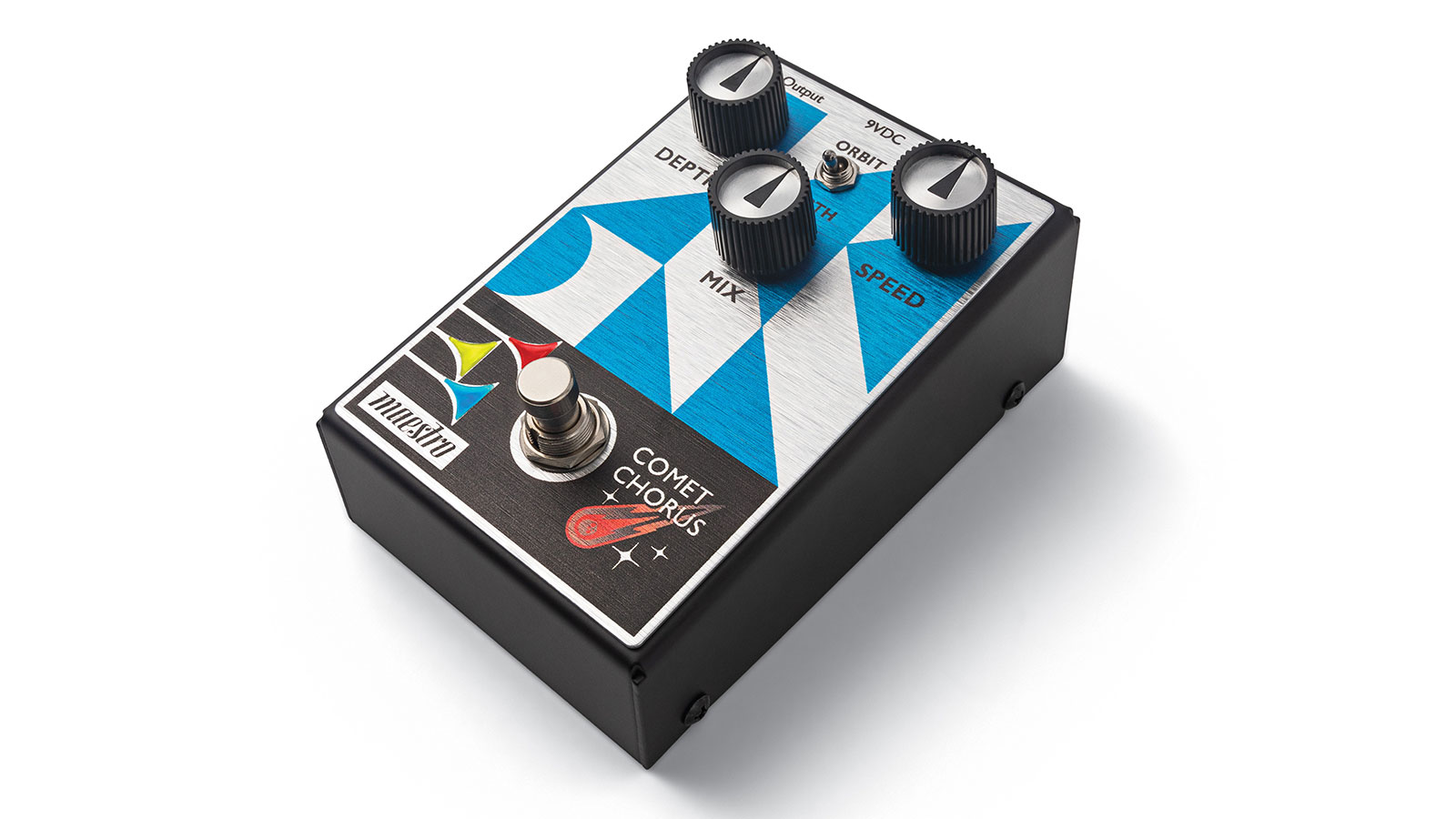
We particularly love the look of this chorus pedal. It’s like something from a NASA documentary. Once again it’s all analogue, meaning that it uses a BBD (bucket brigade device) circuit. You’ve got the expected depth, mix and speed dials, then an intriguing choice of ‘Orbit’ and ‘Earth’ voicings.
Keep things down to Earth and you’ll get a shimmering classic chorus, while going into Orbit adds amplitude modulation (AM) to the sound, resulting in an effect more like a rotary speaker. Again, there’s an internal trim pot which can be adjusted to vary the level of the effect.
Discoverer Delay
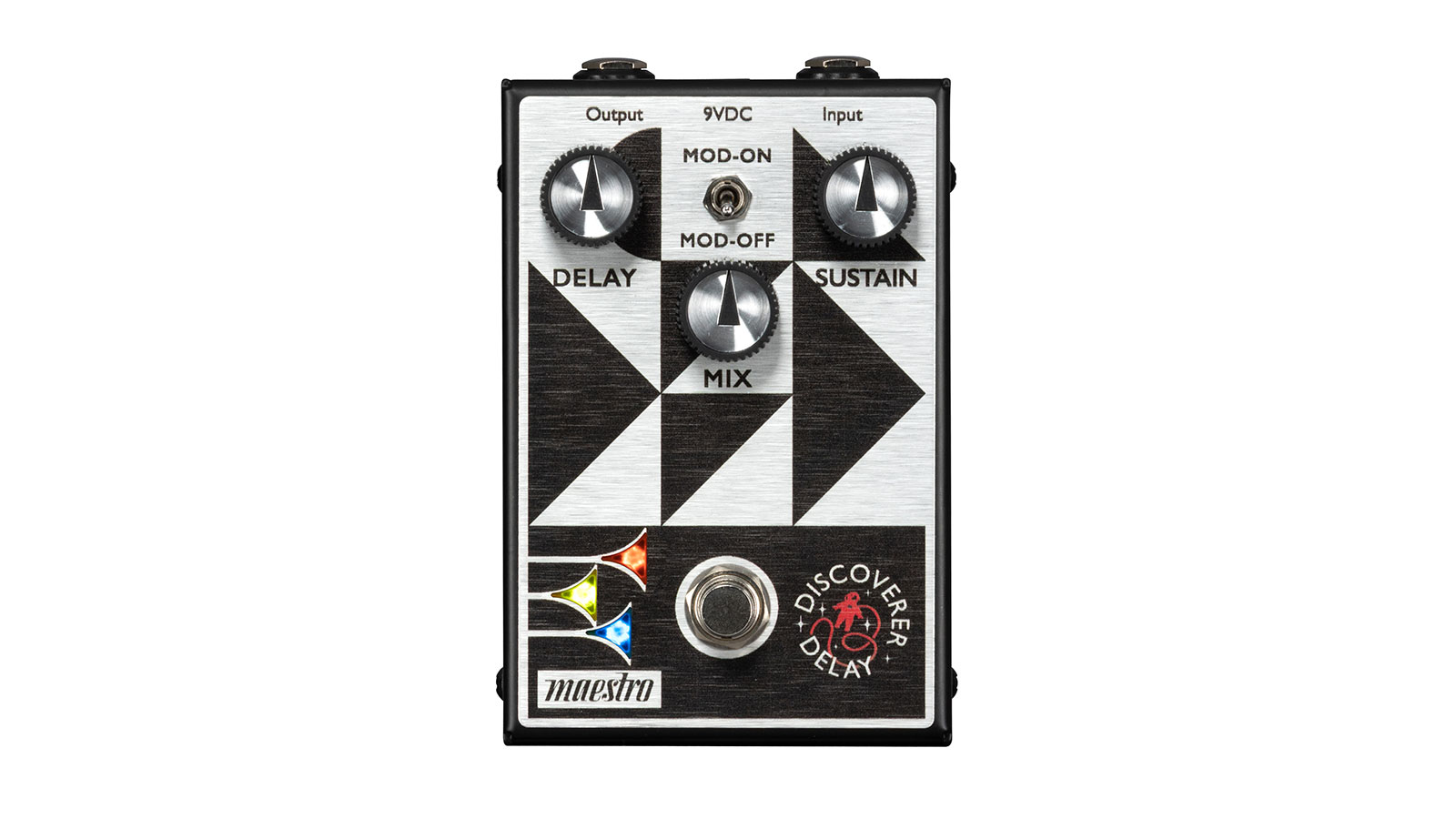
The Discover Delay is sold as a “modern analogue delay”, which like the Comet Chorus, utilises a BBD circuit.
(We should note at this point that the BBD element is being talked up in the Maestro marketing but has long been used in analog delay pedals from many manufacturers, including MXR and EHX).
Delay time ranges from 20ms to 600m (controlled via the Delay knob). Once again, the toggle switch offers more interesting options, engaging a modulation effect alongside the delay signal. This can run the gamut from “tape-like” flutter to “heavily pitch-shifted” and uses two internal trim pot controls to set modulation Speed and Width.
Read more about the return of Gibson‘s Maestro pedals
Orange Guitar Butler
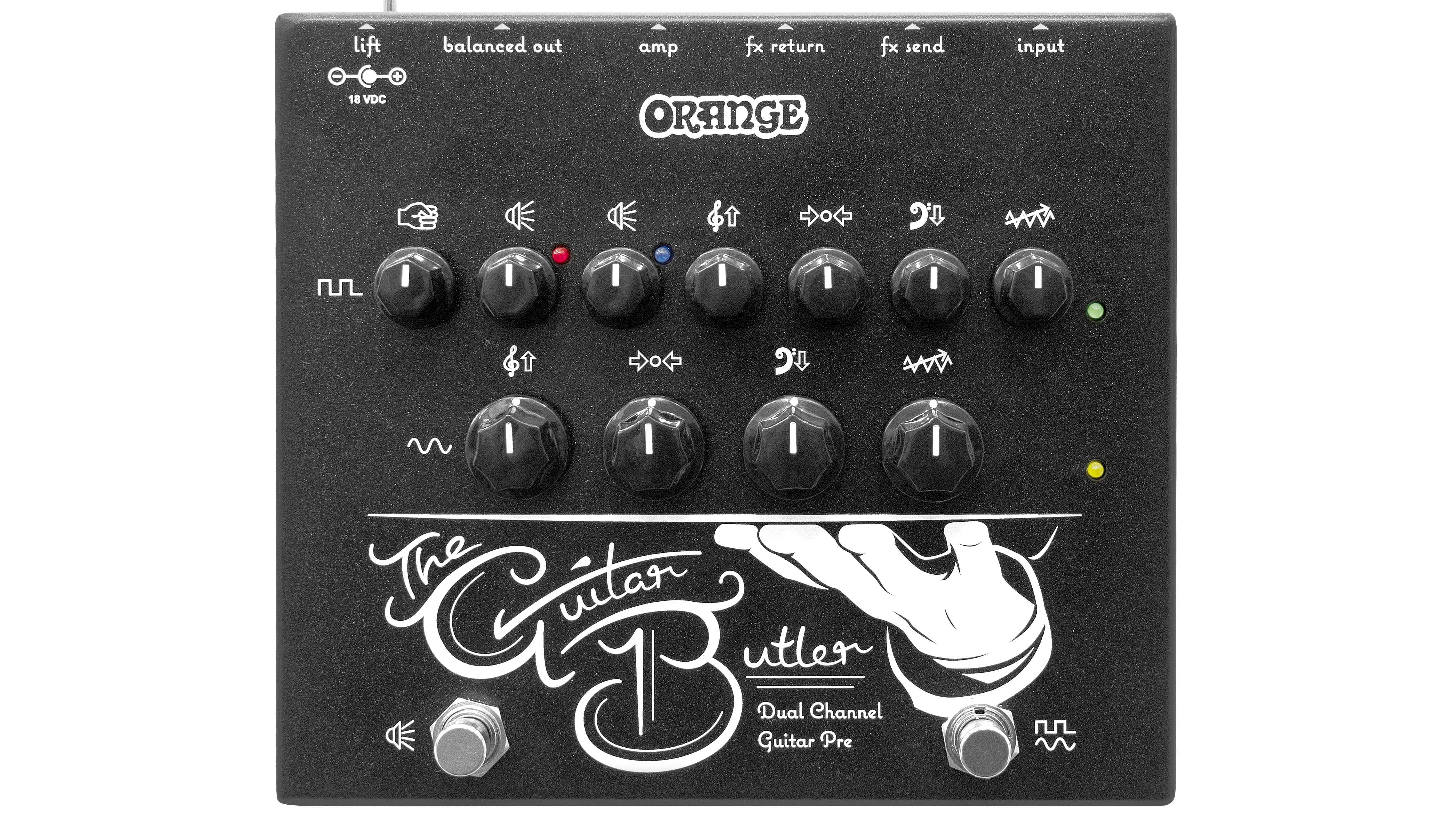
The Guitar Butler's proposition is simple; clean and '70s-style tube overdrive channels packaged in a dual-channel preamp pedal.
Unlike the Blackstar Dept 21 pedals, there's no valves involved here, but the JFET circuitry of the dirty channel aims to get you in that zone for gigging, home playing and recording.
The Guitar Butler is designed so players can plug it straight into either a power amp / speaker cab combo or a PA system, with tone shaping controls designed to complement your other pedals.
A Buffered FX loop also allows you to add modulation, delay and reverb after the preamp. Additional connectivity includes Amp Out without Cab Sim and a Balance Out with it included, plus a Ground Lift switch to stop any earth loops.
US street price is around $429 and £279 in the UK.
Read more about the Orange Guitar Butler
KHDK Scott Ian signature JSL Amp-and-Boost
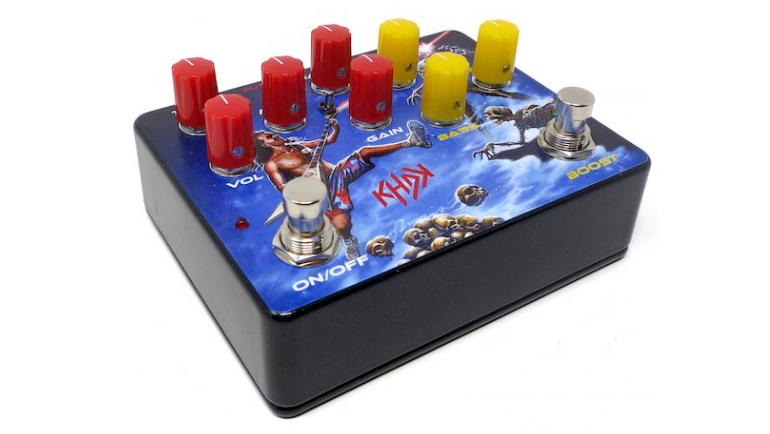
A redesigned take on Ian's previous KHDK Sgt D signature pedal "to give you even more clarity and metal".
It's a two-in-one pedal with Boost and Amp sections. The Boost section works as a pre-distortion EQ control and includes the circuit of an 'iconic booster pedal' Scott used in the early days of Anthrax and S.O.D (i.e. the TC Electronic Booster Distortion).
This 'Zero G package' is another limited edition – just 333 will be made.
It's $249.99 and for more info head over to KHDK Electronics.
A post shared by Anthrax (@anthrax)
A photo posted by on
Crazy Tube Circuits Crossfire preamp/overdrive pedal
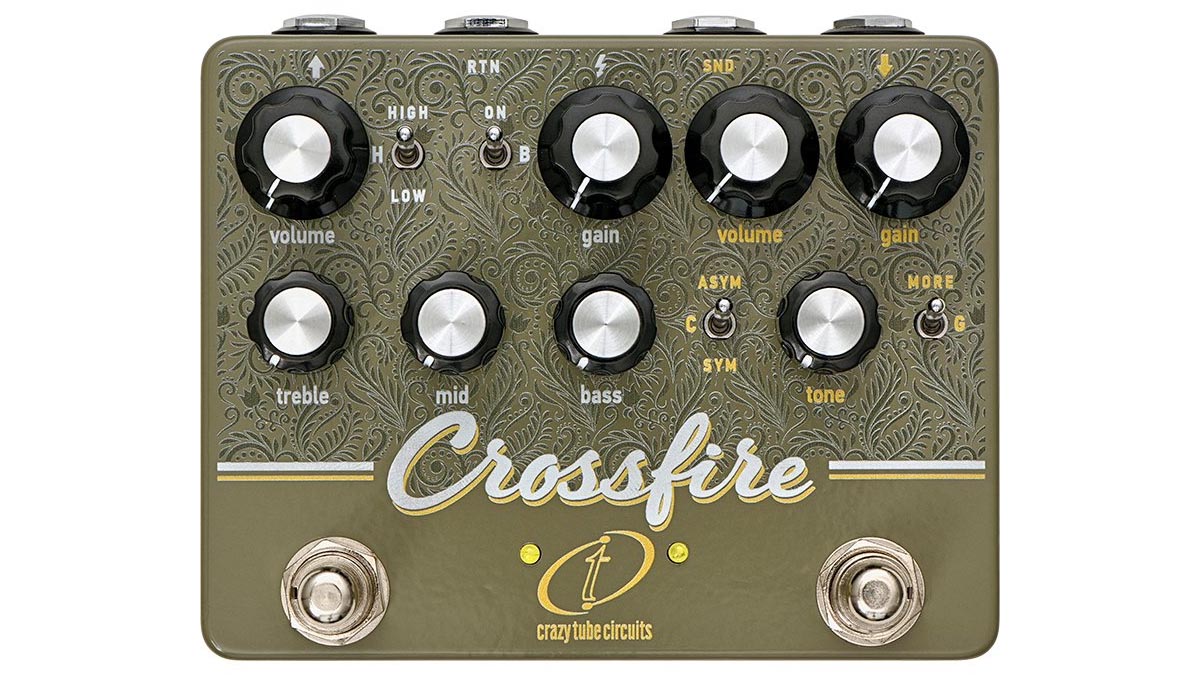
Crazy Tube Circuits’ latest design might have made getting that SRV tone a little easier.
The Crossfire is an preamp and overdrive pedal that combines the tone mojo of vintage black panel Fender amplifiers with a modded TS circuit, and then affords you plenty of latitude when it comes to tweaking and combining both sides.
There is a toggle to select between symmetrical clipping as per the original 70s units and asymmetrical clipping for enhanced touch-sensitivity drive characteristics.
Over to the preamp side, and you have controls for Volume, Bass, Middle, Treble and Gain, but here we have a High/Low toggle switch for selecting how much headroom you want. There’s also a Bright toggle switch that adds a little extra treble sparkle in your sound.
Mr Black Mini Phaser
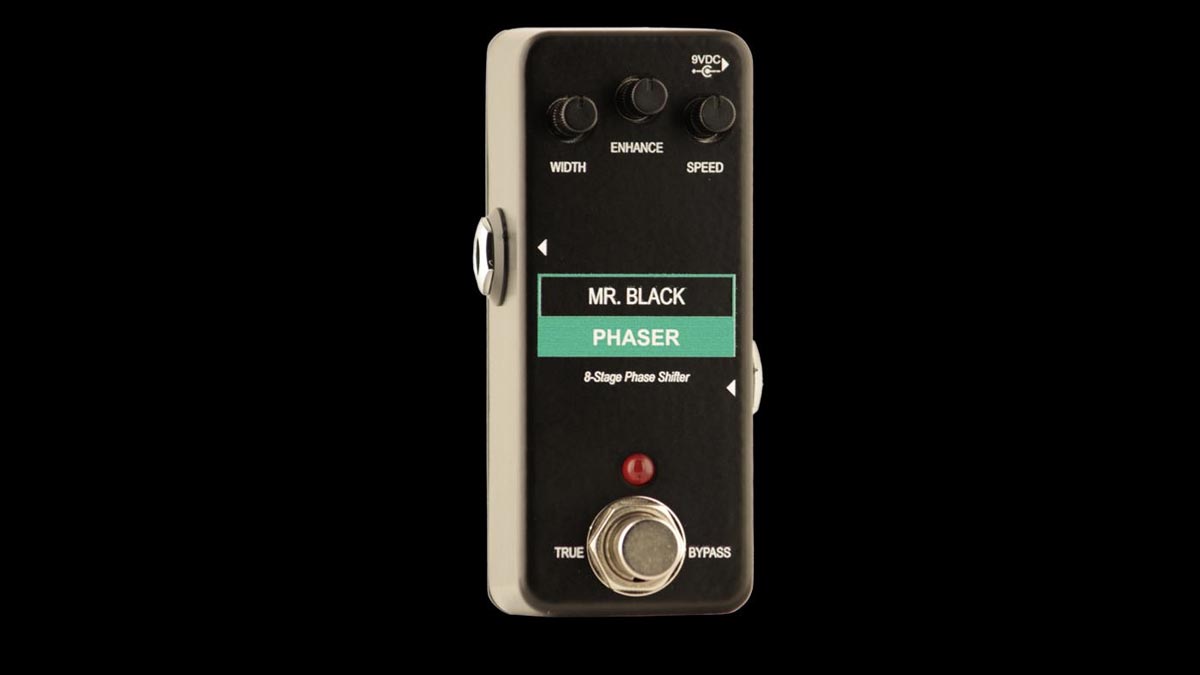
Portland, Oregon effects pedal specialists Mr Black has expanded its super-popular mini guitar effects pedal range with an 8-stage phase shifter inspired by its superb, MusicRadar-approved GilaMondo.
The Mini Phaser assumes a familiar form, and is tiny, and that’s good news for your pedalboard real estate. But it has no shortage of psychedelic potential, with good ol’ Mr B promising “ooey-gooey swirling syrup” by the bucketload, from a phaser pedal that measures under fohttps://www.youtube.com/watch?v=zOUqjzBdfqUur inches long.
There are controls for Width, Enhance and Speed, with Enhance control allowing you to dial in a range of phase styles, from sense of mild, lightheaded wooziness that we might imagine would go well with clean tone electric guitar jangle to what Mr Black describes as “heavy, thick, vocal throb”.
The Mini Phaser is available now, priced $139.
Read more about the Mr Black Mini Phaser
Harley Benton DNAfx GiT Pro

While many of us are wondering how worried the rest of the entry-level guitar multi-effects and amp modeller market should be by Harley Benton's DNAfx GiT Pro, the company has been busy demoing the new unit. And so far it sounds impressive.
The overview above may pique players's interests to find out more, so Harley Benton has followed it up with more detailed demos of amp models and a tutorial on how to make a preset.
The DNAfx also offers the opportunity to change your guitar amp channels, alongside a host of other connectivity options.
The Harley Benton DNAfx GiT Pro is £239 / €288.
Read more about the Harley Benton DNAfx GiT Pro
Walrus Audio
SLÖTVA Multi-Texture Reverb
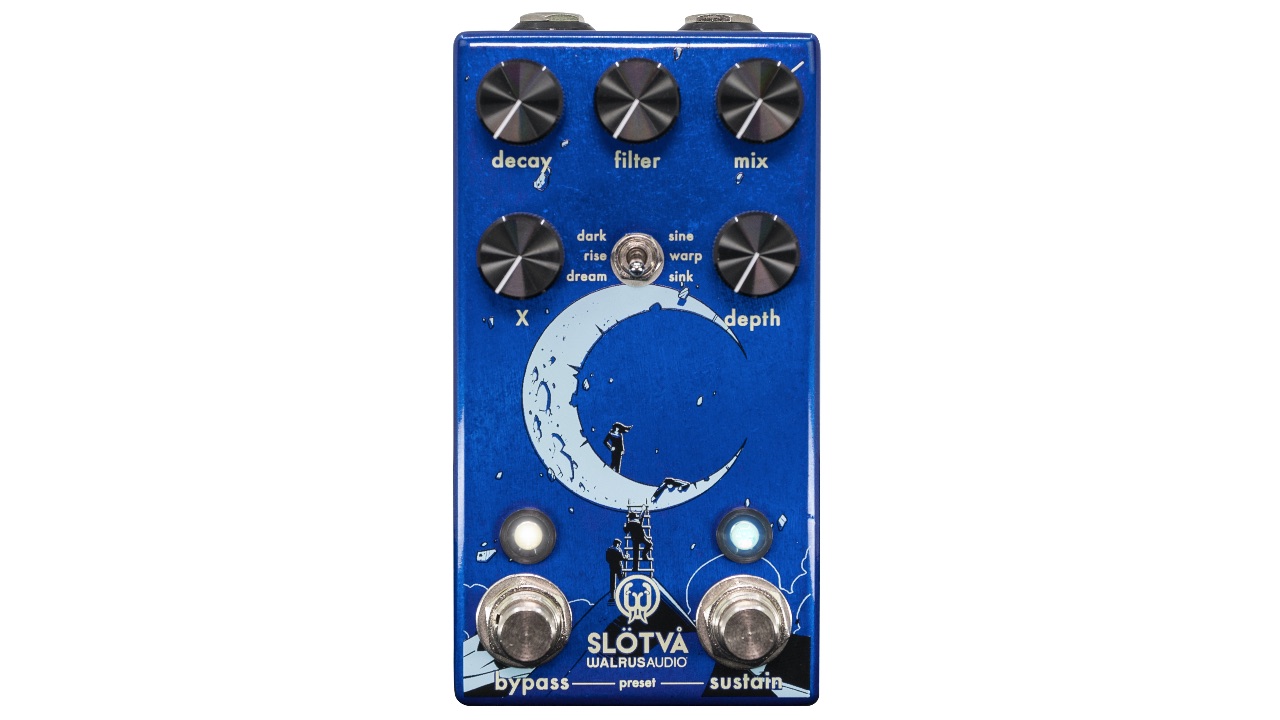
The SLÖTVA builds on the exact same platform as the much-loved SLÖ reverb pedal, including the same triple-algorithm design aimed at creating lush, rich reverb soundscapes, but adds the ability to save three presets.
Just as with the SLÖ, there’s a choice of Dark, Rise and Dream reverb algorithms. These can be manipulated with decay, filter, and mix controls, while multiple modulation waveshapes can be added to the ’verb via the toggle’s secondary function and depth controls. The SLÖ’s fluid X control is also present, changing its function depending on which algorithm is selected.
The SLÖVTA is available now, priced at £209/€239.
Read more about the Walrus Audio SLÖVTA
MAKO M1
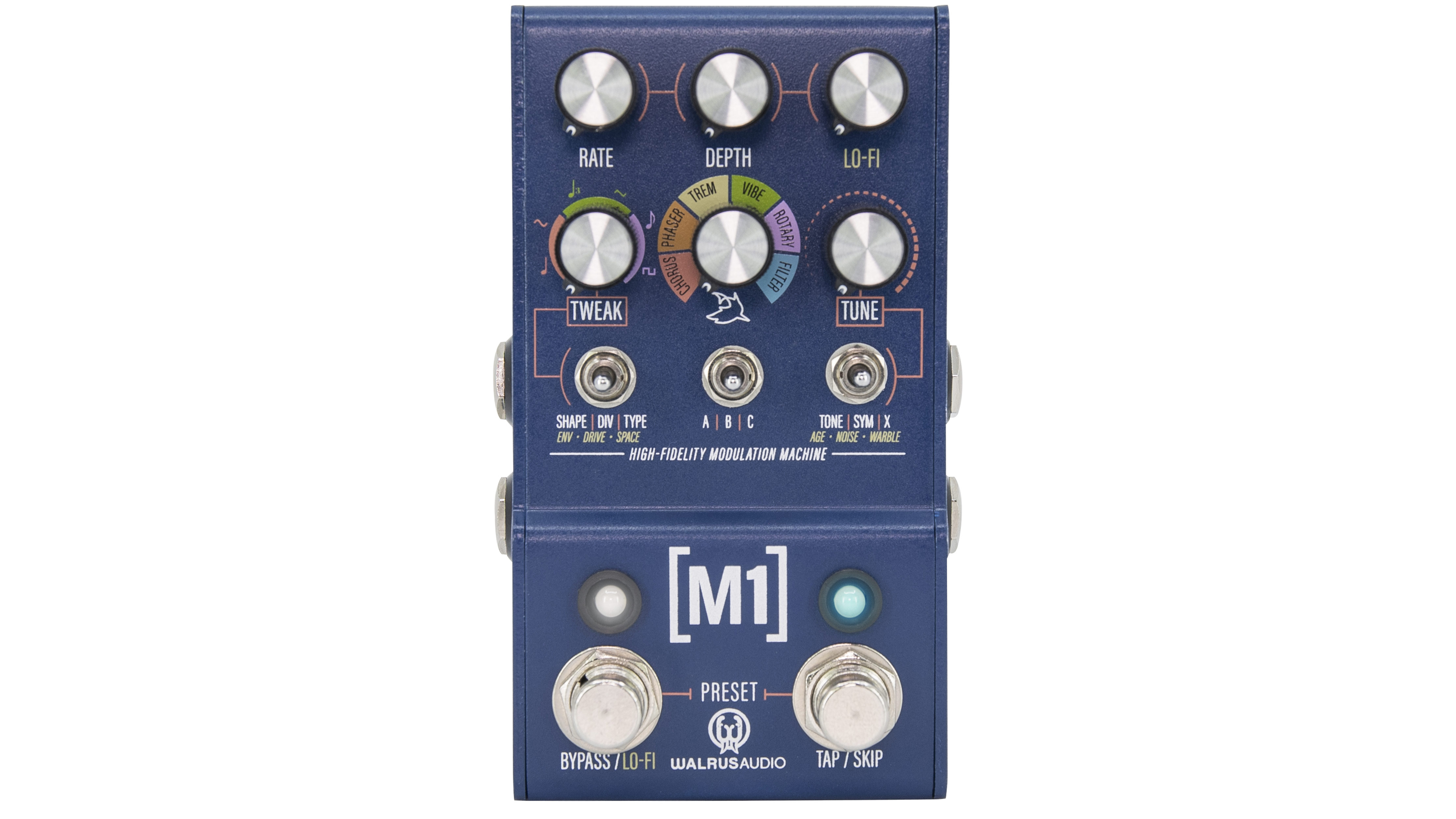
It seems that UA and Strymon have serious competition in the market with Walrus Audio's M1 Modulation Machine.
The latest in its Mako series of pedals, the M1 already trumps the UA Astra on presets; nine here vs the Astra's one, with 128 in total available via MIDI.
Elsewhere, there's six studio-quality algorithms with chorus, phaser, tremolo, vibrato, rotary and filter. These can be degraded and warped with the Lo-Fi control.
The M1 is available now for $349 / £319 .
Read more about the Walrus Audio Mako M1
MusicRadar is the number one website for music-makers of all kinds, be they guitarists, drummers, keyboard players, DJs or producers...
- GEAR: We help musicians find the best gear with top-ranking gear round-ups and high-quality, authoritative reviews by a wide team of highly experienced experts.
- TIPS: We also provide tuition, from bite-sized tips to advanced work-outs and guidance from recognised musicians and stars.
- STARS: We talk to musicians and stars about their creative processes, and the nuts and bolts of their gear and technique. We give fans an insight into the craft of music-making that no other music website can.
“A fully playable electro-mechanical synth voice that tracks the pitch of your playing in real time”: Gamechanger Audio unveils the Motor Pedal – a real synth pedal with a “multi-modal gas pedal”
“Instead of labouring over a perfect recreation, we decided to make an expanded counterpart”: Chase Bliss teams up with Mike Piera for Analog Man collab based on the legendary King Of Tone




![PRS Archon Classic and Mark Tremonti MT 15 v2: the newly redesigned tube amps offer a host of new features and tones, with the Alter Bridge guitarist's new lunchbox head [right] featuring the Overdrive channel from his MT 100 head, and there's a half-power switch, too.](https://cdn.mos.cms.futurecdn.net/FD37q5pRLCQDhCpT8y94Zi.jpg)





